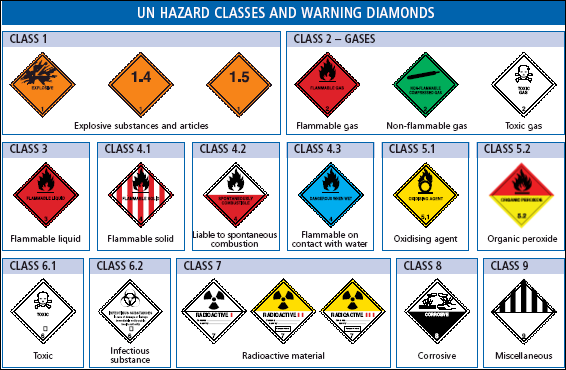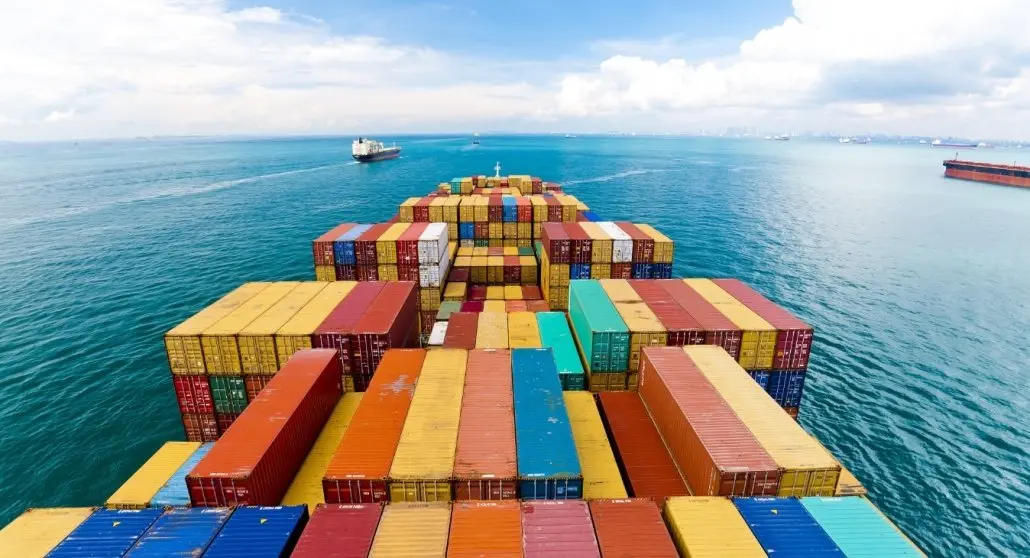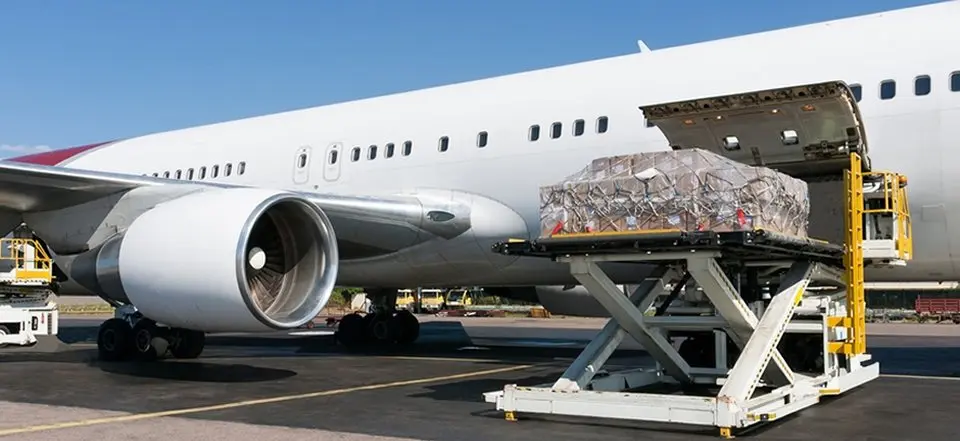Contact DFH Global Logistics for Best Rate
The Best Freight Forwarder in China
All you need to know about Shipping Dangerous Goods from China
Shipping dangerous goods from China to your location. A collection of information for dangerous goods shipping procedures, shipping codes, and compliance.
Shipping dangerous goods from China is a different proposition compared to shipping non-dangerous goods. This is because of the sensitive nature of cargo classified as dangerous goods. The procedure and documents required to process shipments are very important when moving dangerous cargo from China to any location in the world.
In this guide, we will provide you with all the vital information you need to successfully complete dangerous goods shipped from China.
1. What is the difference between dangerous vs. hazardous?
2. Classification of dangerous goods by the UN
3. How to Ship Dangerous Goods from China
4. DFH Global Logistics handle Dangerous Cargo
5. UN Dangerous Goods Code
6. Dangerous Goods Shipping Rates
7. Dangerous Goods Shipping documents
8. Why Choose DFH Global Logistics for all your Hazardous Goods Shipments?
9. FAQ
What are the dangerous goods?
Dangerous goods can simply be defined as any material that contains hazardous properties. When discussing cargo shipping, any goods of a sensitive nature that could pose a health risk to handlers and humans can be classified as a dangerous good if not properly controlled. Dangerous goods are also classed based on their nature of hazards such as explosive, flammable, inflammable and poisonous, etc.

Moving forward, the issue of hazardous substances as it concerns human health also comes to mind. If a cargo contains substances that can potentially harm human health, it is termed as hazardous. These substances may be liquids, solids, and semi-solids which are mixtures or pure.
When used as raw materials, they produce fumes, dust, mist, or vapor that is injurious to humans and may cause immediate, short, or long term effects. Some effects of hazardous substances on humans include poisoning, chemical burns, irritation, sensitization, birth defect, cancer, or complications with the central nervous system and other internal organs like the lungs, kidneys, etc.
What is the difference between dangerous vs. hazardous?
Hazardous substances of agents are classified based on their health effects on humans, while dangerous goods are classified based on the immediate chemical or physical impact they have on the environment such as explosions, fire, poisoning, corrosion, etc.
Dangerous Goods List
There are quite a lot of common goods that shippers transport from one location to another, especially from China. Some common examples of such goods are Lithium batteries, alcohol, lighters, perfumes, flammable liquids, and many others. To make the shipping process easy for shippers, the UN regularly releases and updates the list of dangerous goods shipments and other vital information regarding, handling, regulations, and legal enforcement.
If your cargo contains substances that pose a danger to human health or the environment, it will be classified by the authorities as dangerous goods.
As far as transportation goes, they can be moved by using sea vessels or airplanes, but sea vessels are the commonly used crafts. However, you can move your dangerous cargo via given the fulfillment of aviation regulations. Air carriers adopt certain safety principles in order to prevent the risks to the aircraft and its crew.
Classification of dangerous goods by the UN
If you plan to import dangerous goods into your country from China, you must make sure that you adhere to the laid down regulations of the United Nations as provided in the nine classification lists.

We review each of the 9 in detail.
- Class 1- Explosive materials
Items under class 1 are substances, that may potentially cause an explosion, which in turn could lead to a fire outbreak. Items under Class 1 are not shipped through the air but via road, rail or sea. Class 1 items are further subdivided into 6 subgroups.
- Class 2 – Flammable Gas
Flammable gas items are subdivided into a flammable gas, toxic gas, and neither flammable or toxic gas. E.g., Helium, and Oxygen.
- Class 3 – Flammable Liquid
Items in this class are liquids or a combination of liquids that release flammable fumes or vapor when exposed to specific temperatures or liquids that have a flashpoint that is below 60.5 degrees Celsius or 140.9 degrees Fahrenheit.
- Class 4 – Flammable Solids
They are broken down into three subgroups, namely, solids that are highly flammable, solids that may likely to react if they come in contact with water and flammable gases.
- Class 5 – Oxidizer
This class is basically for organic pesticides and oxidizers. Both groups cover all agents that react to oxygen when exposed.
- Class 6 – Toxic Infectious substances
Substances under class 6 are vaccines, arsenic, cyanide, and pathology specimens. If your cargo contains any or more of these, it will be categorized under this class.
- Class 7 – Radioactive materials
This class is for materials that have radioactive properties greater than 70 kilograms.
- Class 8 - Corrosive materials
Class 8 is not subdivided into groups, unlike other classes, but consist of items that have corrosive solids and liquid properties. These properties can cause tissue damage if it is leaked. Some corrosive items include sulfuric acids, battery acids, and mercury, to mention a few.
- Class 9 – Miscellaneous items
The remaining items not listed under the previous eight classes are found on this class list. All items that may pose a risk to human health when transported via air is listed under class 9. There are so many items that fall into this category, and some of them are chain saws, asbestos, anesthetics, etc. The list is endless, but do bear in mind that if it is trafficked with an aircraft and it has the potential to cause damage to the craft, other cargo and even pose a risk to the crew, it falls into this category.
How to Ship Dangerous Goods from China
Shipping dangerous goods from China requires the technical support of an expert due to the sensitive nature of such items and the regulations involved. This is why the services rendered by DFH Global Logistics is an invaluable one. You can ship dangerous goods from China to any destination of your choice by sea or air freight or even by road.
If the cargo requires a container, DFH can help you arrange that from a reliable shipping company. There is also a dangerous goods Courier service available for shippers who want DFH to handle the entire logistics from start to finish.
Things to bear in mind when shipping dangerous items
- Understanding the hazards
As a shipper of hazardous materials, it is very important that you understand the nature of the items you are transporting and the risks involved. You also need to be fully aware of the regulations surrounding the movements of such items from China to your home country or a neighboring country.
Items that you may consider harmless like paints, nail polish, balls, etc. may fall under the DH classification without your knowledge. Understanding what the rules are and the classification of your cargo is a significant first step to shipping dangerous goods.
- Shipping batteries
Common items like batteries need proper handling and differentiation. Lithium metal batteries should be differentiated from Lithium-ion batteries for safety. When it comes to lithium batteries shipments, you need to adhere to the Special Provisions Code IMDG 188 which stipulates the following:
- Lithium content and watt ratings
- Aggregate Lithium content and watt-hour rating
- Packaging
- Manufacturing and Testing
- Drop Test of Package
- Package marking
- The gross weight of packaging
NB: Shippers of lithium batteries must have full knowledge of products, and all packages must display all information required by international law.
- Follow the Regulations
Make sure you follow the regulations regardless of the mode of transport you are using to move the cargo. Do bear in mind that each transport mode has its own regulations. For instance, the regulations guiding the use of aircraft to move dangerous goods is different from that of sea carriers.
Also, be conversant with local shipping laws as laws vary from country to country and from region to region even in the same country. On an international level, global regulations are governed by the International Maritime Dangerous Goods Code (IMDG). This body is the Internationally recognized institution that regulates the transportation of hazardous materials by sea or air. Furthermore, the laws are put in place to protect crews from harm and to guard against marine pollution.
DFH Global Logistics handle Dangerous Cargo
It doesn’t matter what part of the globe you reside or where you want to ship your Chinese cargo. At DFH Logistics, we handle all kinds of dangerous goods shipments. We handle FedEx, UPS, DHL, and TNT shipments on behalf of all our clients.
Transportation of Dangerous Goods
The procedure involved in the entire process is quite extensive, which is why you need the support of an experienced freight forwarder to guide you through. In this section, we will attempt to provide you with some information about the packaging, handling, and storage of dangerous goods, amongst other vital information.
- Classification
In a previous section, we highlighted in detail the nine different classes of dangerous goods. Do scroll up to access this information. It is very important to know what the various classes are because the shipper is solely responsible for ensuring that the cargo is packaged and handled in line with these regulations. Shippers with little or no experience have nothing to worry about since, at DFH Logistics, we take up the responsibility on behalf of our clients.
- Packaging
The packaging is another core focus of international regulations. Dangerous goods are to be packaged in such a way that the items are secured in their containers to prevent exposure to humans or other cargo during transportation. The containers must be watertight and, in some cases, airtight. The nature of the items determines the kind of packaging to be used.
For waste items like used syringes, for example, they shall be disposed of properly by first securing them first in sharp proof bags. Liquid wastes also have special containers too. Also bear in mind that based on International law, all waste carriers must be marked according to their risks—eg biohazard waste, etc.
- Labels
All Dangerous goods items must carry bold and clear labels indicating their properties. The labels must be placed at a visible position on the bag or carton of whatever covering is used in such a way that they can be seen.
- Transportation
Your cargo may be transported via sea or air from China. But do note that some classes of items are not to be transported via air due to their combustible nature. Sea freight is highly recommended if your cargo is of a large volume, and you are not facing any time constraints. Sea transport is cheaper, but if you are running a very short deadline and speed is of the essence, air shipping is available as long as the laws and regulations allow it.
- Training
The handlers of the items also need to be well trained in handling the cargo. In some countries, handlers are expected to
- Be trained in the art of handling DH items
- Classification and test methods
- Provide shipping and training certificates
- Use proper equipment like a face mask, hand gloves, etc
Have emergency measures in place should accidents such as spillage and accidents occur
UN Dangerous Goods Code
The United Nations, dangerous goods codes, have 4-digit numbers each that specifically differentiate one type of hazardous item from another. Within the framework of identifying dangerous articles, the UN has provided code numbers to differentiate each one in terms of form such as oxidizers, explosives, flammable liquids or toxic liquids, and so on.

Then within the same category, different items have their own unique identification numbers. For example, acrylamide has a UN 2074 as its unique number, while in some other cases, groups of chemicals containing similar properties share the same numbers. This is why it is hugely important to identify the accurate number of all dangerous items in your cargo so as to avoid breaking regulations.
Find below, the UN Code numbers for dangerous goods. Also, note that this list is by no means conclusive as the list is always under review year in year out.
List of UN Numbers (35 in all)
List of UN numbers 0001 to 0100
List of UN numbers 0101 to 0200
List of UN numbers 0201 to 0300
List of UN numbers 0301 to 0400
List of UN numbers 0401 to 0500
List of UN numbers 0501 to 0600
List of UN numbers 1001 to 1100
List of UN numbers 1101 to 1200
List of UN numbers 1201 to 1300
List of UN numbers 1301 to 1400
List of UN numbers 1401 to 1500
List of UN numbers 1501 to 1600
List of UN numbers 1601 to 1700
List of UN numbers 1701 to 1800
List of UN numbers 1801 to 1900
List of UN numbers 1901 to 2000
List of UN numbers 2001 to 2100
List of UN numbers 2101 to 2200
List of UN numbers 2201 to 2300
List of UN numbers 2301 to 2400
List of UN numbers 2401 to 2500
List of UN numbers 2501 to 2600
List of UN numbers 2601 to 2700
List of UN numbers 2701 to 2800
List of UN numbers 2801 to 2900
List of UN numbers 2901 to 3000
List of UN numbers 3001 to 3100
List of UN numbers 3101 to 3200
List of UN numbers 3201 to 3300
List of UN Numbers 3301 to 3400
List of UN numbers 3401 to 3500
List of UN numbers 3501 to 3600
NB: Do note that these numbers represent item groupings, and under each grouping are different items.
Dangerous Goods Shipping Rates
The shipping rates vary from carrier to carrier. Also of importance when calculating the shipping rate is the weight and size of the cargo, the distance between the Chinese port of origin, and the port of destination. In addition to all this, you also have to consider the season of the year.
When carriers are heavily booked by shippers, their rates tend to rise, but during the offseason, when the booking is low, rates tend to drop as well. In a nutshell, here are the factors that influence shipping rates.
- The size of the cargo per cubic feet
- The weight of the cargo per kilogram
- The International cost of crude oil as at the time of shipping the cargo
- The season of the year
To reduce the cost of shipment, DFH Logistics has built an extensive partnership with several careers operating along the International coastlines from the Pacific ocean all through the Indian and Atlantic Oceans.

The popular Suez Canal shipping route that cuts across the Mediterranean is also covered by the Carriers we work with, so you can trust us to find you a carrier that offers cost-effective shipping rates.
Can you ship dangerous and non-dangerous goods side by side from China?
When it comes to shipping dangerous goods from China, the rules are very clear and strict. According to international shipping laws and conventions, dangerous items that are not compatible should not be stored or transported together.
This should be avoided so as to prevent potential reactions between these items or to reduce the possibility of accidental spills, which could have disastrous consequences.
So essentially, dangerous and non-dangerous goods should not be shipped together. However, both materials can be shipped at the same time or stored in the same warehouse provided that both are separated from each other by a distance. It is also advisable to get more information from the Chinese authorities and from the authorities in the port of destination for clarity.
This is ideal considering the divergent laws in place in many countries. Some countries ban the shipping and storage of dangerous and non-dangerous goods outright. Others allow it under certain restrictions. Some countries don’t allow the shipping of dangerous goods alongside medical supplies and food items.
When it comes to the regulations involved, the experts are DongFangHong Logistics will take care of the entire process on your behalf from start to finish.
Dangerous Goods Shipping documents
There are certain required documents you must provide to the authorities before you can transport dangerous goods in and out of a country.

These documents are:
- Air waybill: This waybill is for cargo transported using an aircraft. Some items are not allowed onboard an aircraft, so this document must provide details showing what the cargo contains. It is solely for air freight
- Shipper' Dangerous Goods Declaration: This document is provided by shippers to the cargo carrier. The declaration form should provide detailed information and also declare the sensitive nature of the cargo on board. The format in which this document is presented should reflect the best practices in the transportation industry of both countries (where it is coming from and where it to be delivered). The standard practice of creating a Declaration form is regulated by the Dangerous Goods Regulations (DGR) and the International Air Transport Association (IATA).
- Dangerous Good Permit: This document is essential for cargo carriers. It empowers them by law to carry dangerous cargo onboard their vessels. Sea vessel owners and Courier companies obtain this document from the authorities.
- Material Safety Data Sheet: An MSDS document contains relevant information regarding the potential effects of chemical exposure or the effect dangerous substances can have on humans and the environment.
This document notifies not only the authorities but also the handlers of cargo.
Why Choose DFH Global Logistics for all your Hazardous Goods Shipments?
- Avoid government sanctions
For starters, the shipping of hazardous items without proper documentation can lead to severe sanctions from the authorities in the form of heavy fines, cargo seizures, or in worst cases, prosecution. Due to the sensitive nature of these items and how they can impact human life and the environment, governments the world over operate very strict regulations. When you use our network, we guarantee you a smooth and painless process. We handle the necessary paperwork and ensure that your items are delivered to you in good condition.
- Qualified handlers
The logistics experts we work with are trained handlers who know all there is to know about handling dangerous substances. From the point where we take delivery of the cargo, we make sure that only trained hands are involved until the cargo is delivered to you.
- Safety Advisor
We have safety experts who are all too willing to offer you sound advice about packaging, documentation, handling, and any other need you might have.
- Trusted Dangerous Goods Freight Forwarder
Our service is one you can trust every step of the way. We have handled tons of dangerous cargo over the years from China, so we have the required experience to get your shipment to you in good condition and on time too.
- Affordable rates
Our rates are affordable, so you don’t have to pay more than what you can afford while ship dangerous goods from China to any destination anywhere in the world.
FAQ
- Where do I get a dangerous certificate from?
This document can be obtained from the transport authorities.
- How long is a dangerous certificate valid for?
The validity of this document varies from country to country, but on average, a dangerous certificate is valid for 24 months after the issue date.
- How do I get a dangerous goods license?
To get this license, you will have to apply in person. To do so, you will need to present a means of identification, a medical certificate duly signed by a doctor, a dangerous goods driver’s license, and a duly completed dangerous goods driver license application form.

- Can dangerous goods be transported on a passenger aircraft?
No, it may not expect otherwise stated in accordance with the ICAO TI protocol. Besides this, dangerous items cannot be carried by airline crews or passengers into commercial passenger crafts. These items are forbidden on board.
- Can you Air freight dangerous goods?
Yes, you can under special circumstances and conditions that do not violate international aviation regulations and UN codes.
- Who can handle and transport dangerous cargo?
DFH Global Logistics is a certified and qualified freight forwarder with sufficient connections, training, and technical experience to handle this type of shipment.
- What is a dangerous goods declaration document?
Dangerous goods declaration documents are documents prepared by a shipper or consignor, which certifies that the cargo been transported has been packed, labeled, and declared, thus in accordance with international shipping standards and regulations.
- Which dangerous goods can be stored together?
Only goods of the same item class can be stored together.
Contact DFH Global Logistics for Best Rate
Your Best Freight Forwarder in China

